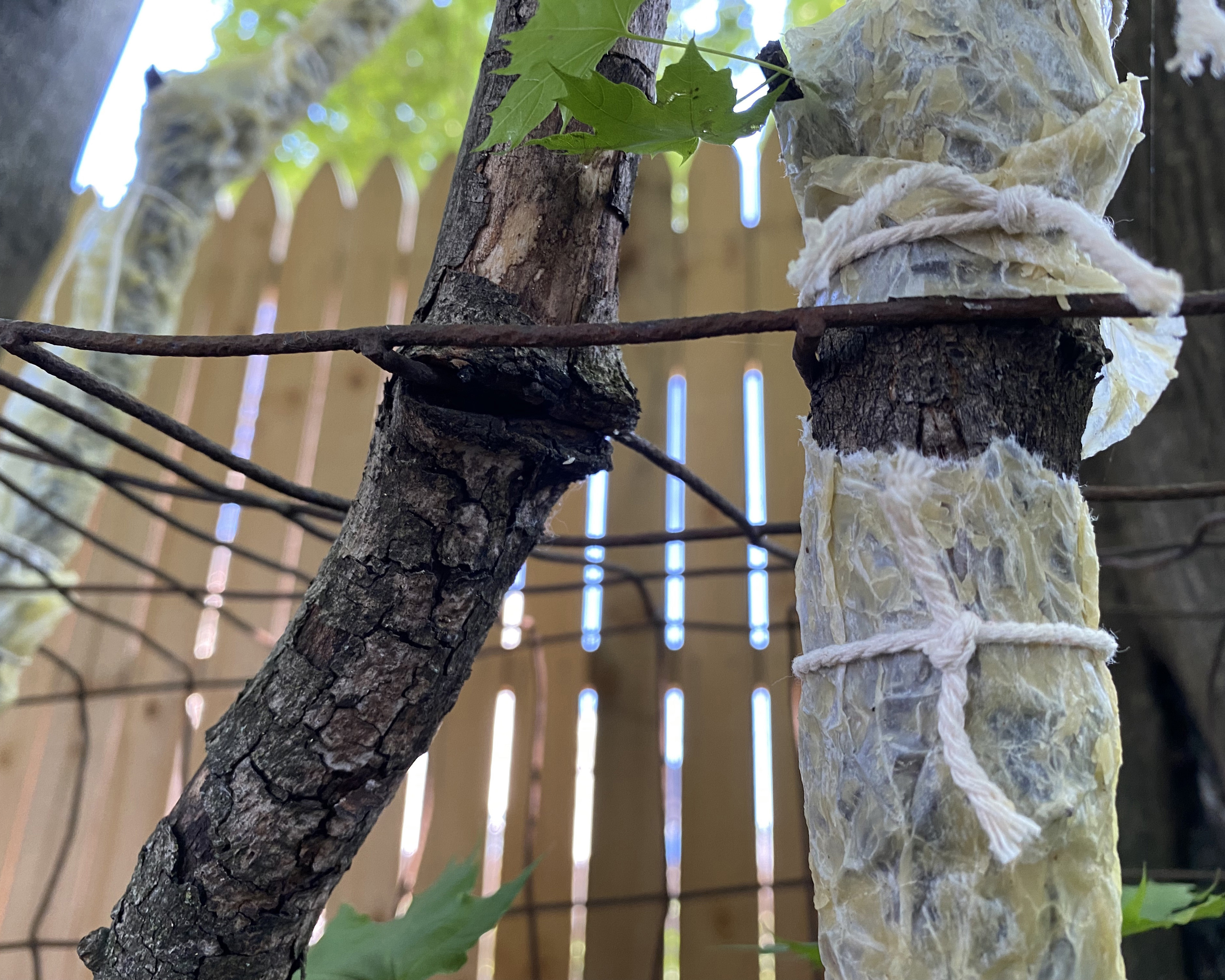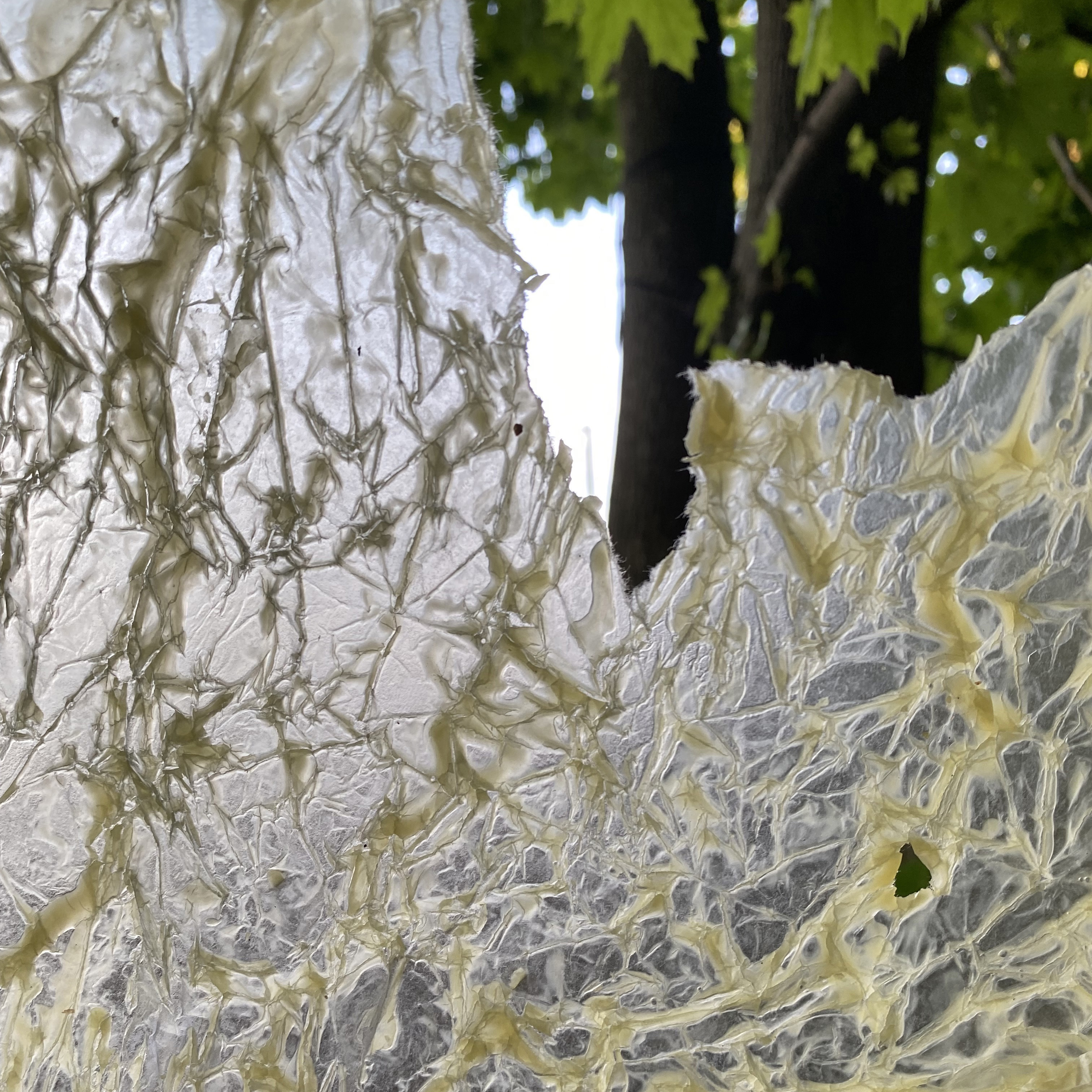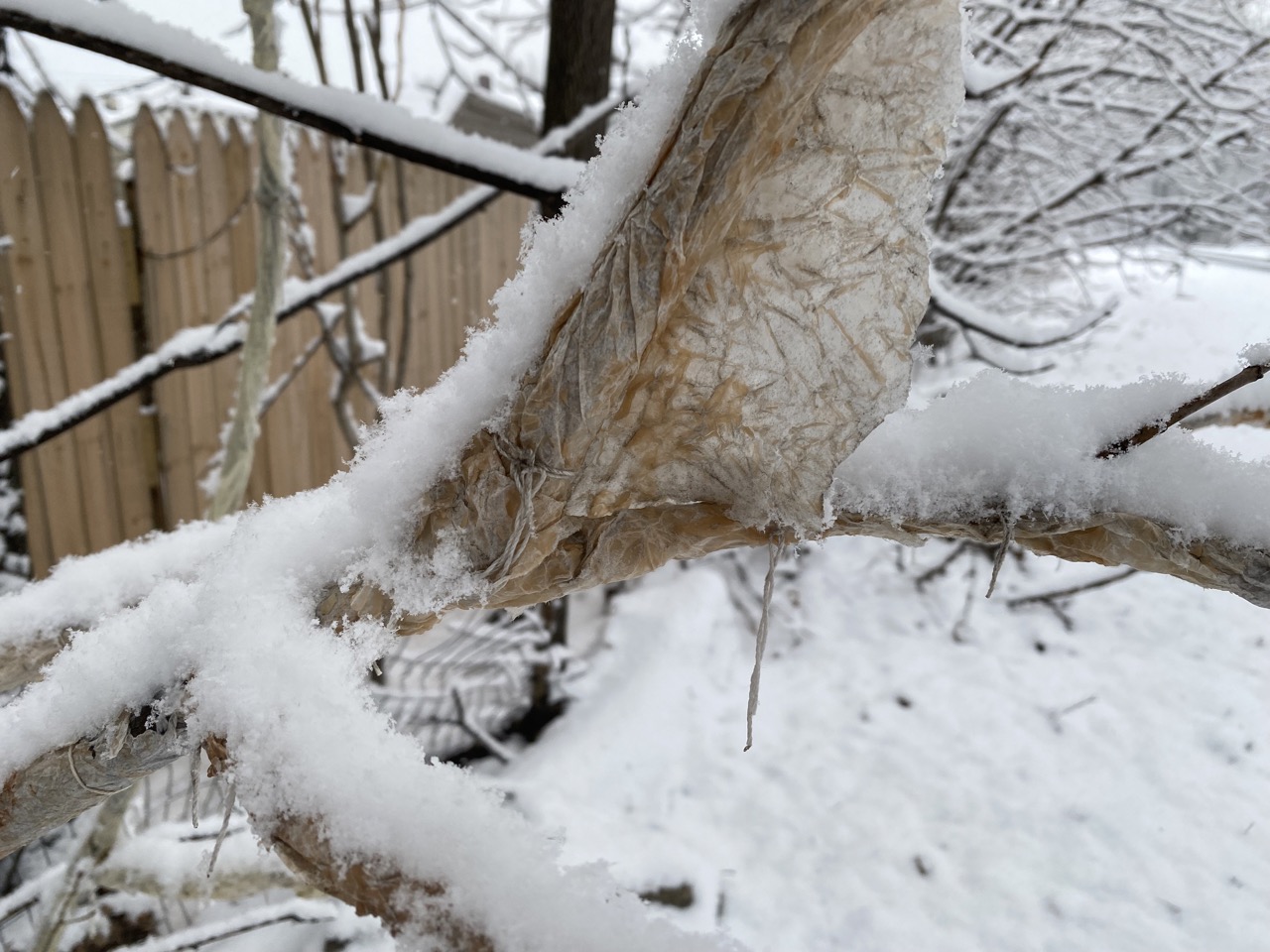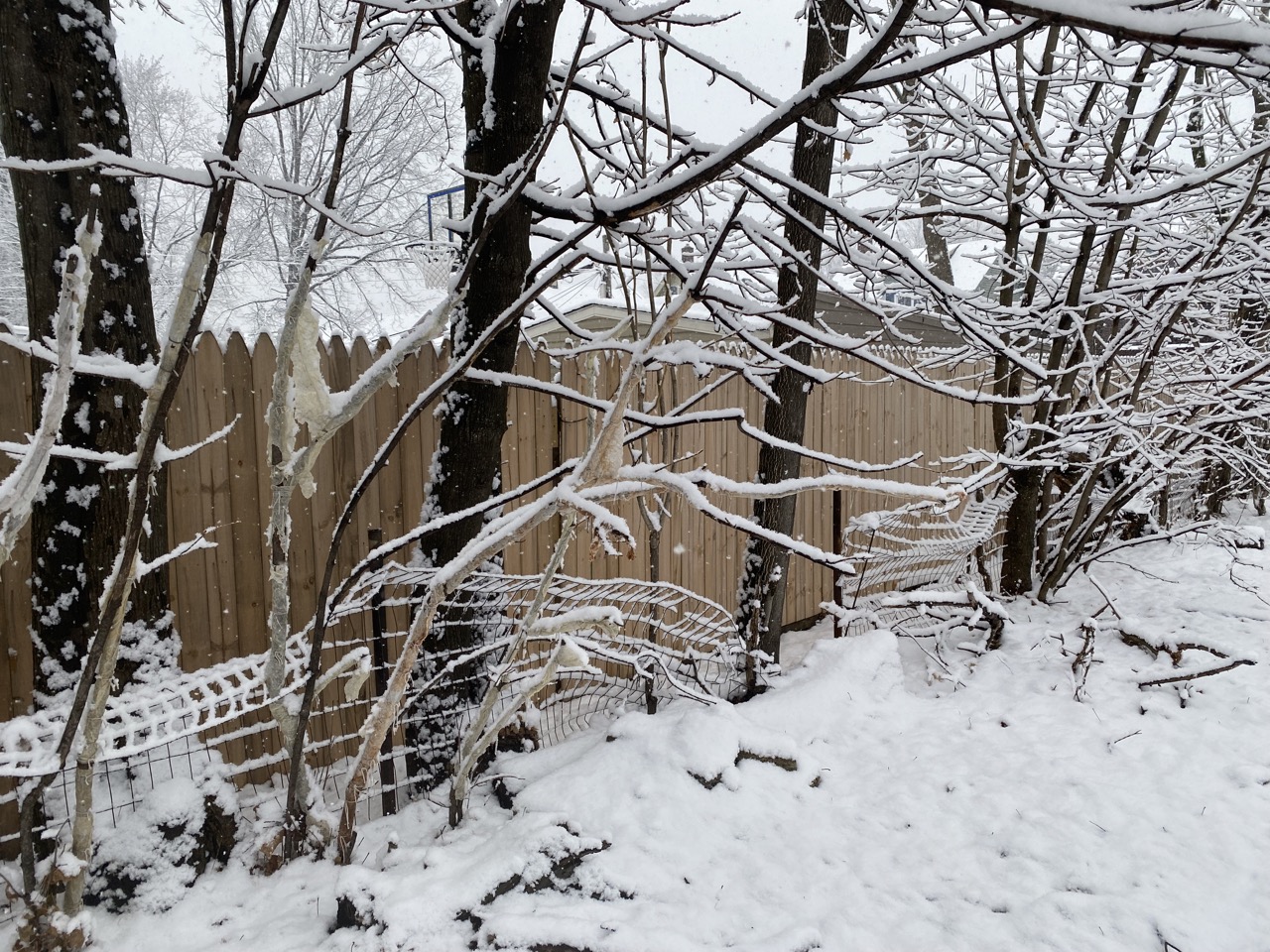Edaphoecotropism


Edaphoecotropism serves as a reminder of our responsibility to tend to the wounds we have inflicted upon the Earth and embrace a more harmonious coexistence.







About the work
Edaphoecotropism (2022) is a durational site-specific
installation measuring approximately 6 x 15 x 3 feet, situated in an outdoor
environment and constructed entirely from biodegradable materials. I wrapped
living and dead tree branches in waxed tissue paper secured with cotton twine
or water-soluble tape.
The title references the scientific concept of edaphoecotropism, which is when trees incorporate foreign objects into their tissue. This process strengthens the tree’s connection to its surroundings and allows it to grow around obstacles. I was drawn to the site because several wrapped tree trunks had grown around metal fence posts.
The installation’s materials include cotton twine, tissue paper, beeswax, natural mineral pigments and inks I created, water-soluble paper tape, and discarded paper trash found on site—all of which will biodegrade over time.
The installation remains unmarked and integrated into its natural surroundings. It allows casual interaction from the people walking by, with insects landing on the branches and wind and rain eroding the materials.
The title references the scientific concept of edaphoecotropism, which is when trees incorporate foreign objects into their tissue. This process strengthens the tree’s connection to its surroundings and allows it to grow around obstacles. I was drawn to the site because several wrapped tree trunks had grown around metal fence posts.
The installation’s materials include cotton twine, tissue paper, beeswax, natural mineral pigments and inks I created, water-soluble paper tape, and discarded paper trash found on site—all of which will biodegrade over time.
The installation remains unmarked and integrated into its natural surroundings. It allows casual interaction from the people walking by, with insects landing on the branches and wind and rain eroding the materials.